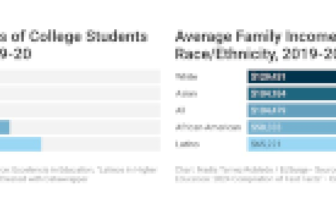Schools Are Desperate to Stop Violence. Will These New Guidelines Help?

[ad_1]
After the Virginia Tech shooting in 2007, Virginia became the first state to require colleges to conduct threat assessments, later requiring K-12 schools to do the same.
A method for schools to figure out which student threats foreshadow violence, threat assessment was adapted from the Secret Service. When following these methods, a team trained in the model will work to discern the extent to which a threat made by a student is actually menacing. Once a threat is made, a team of school administrators, mental health professionals and law enforcement officers will investigate: collecting facts, interviewing witnesses and determining its threat level.
It’s become pervasive. These days, along with Virginia, eight states also oblige schools to have threat assessment teams, including Florida, Illinois, Kentucky, Maryland, Ohio, Pennsylvania, Rhode Island and Texas. Sixty-four percent of public schools have a threat assessment team, according to an Institute of Education Sciences report using data from the 2019-2020 school year.
But there’s been a problem: Precisely what schools mean by “threat assessment” varies, and it isn’t always based on evidence, according to Dewey Cornell, a forensic clinical psychologist and professor at the University of Virginia who developed one of the most widely cited of these protocols.
Proponents argue that it’s given threat assessment a bad name. In a culture of fear and anxiety about school violence, schools can overreact, one researcher argues, mislabeling bad discipline practices.
Will a new set of guidelines from the National Center for School Safety help?
Controversial Practices?
Intermingling law enforcement and education is not universally popular.
Proponents argue that threat assessments decrease suspensions in a school and also reduce reliance on “zero-tolerance” policies for threats. These harsh policies that suspend or expel students for infractions regardless of the context are known to disproportionately punish Black and Hispanic students.
Still, the threat assessment process has been criticized for disproportionately targeting some groups of students as well, particularly students in special education. Critics allege that these assessments lead to those students getting labeled aggressive, causing them to be denied necessary support. These critics tend to favor increased investments into mental health services, rather than police presence, which they argue can reinforce the school-to-prison pipeline.
For Cornell, this is a confusion, arising partly because what constitutes threat assessment isn’t standardized.
Cornell says there’s “reasonable consensus” in the field about what makes up evidence-based practices. That includes a process that emphasizes facts in the assessment, a multidisciplinary assessment team, an effort to distinguish the level or seriousness of the threat and a commitment to try to resolve the threat and help the student, Cornell says.
But too often, schools slap the label “threat assessment” on whatever discipline regime they have, even if it’s “antithetical to threat assessment,” he adds. Cornell points toward zero-tolerance frameworks, arguing that they are the “antithesis” of threat assessment approaches, which seek to place threats in their context. “I think there’s a perception that I’ve run across in some critics who think that when schools are overreacting to student threats, it’s because they have a threat assessment program, and I think it’s more often that they don’t have a threat assessment program,” he says.
He hopes new guidelines will help.
Recently, Cornell co-authored a toolkit for the National Center for School Safety, based on interviews with about 200 experts. The guidelines instruct schools on how to recruit and train assessment teams, as well as how to maintain records, evaluate programs and avoid worsening disparities.
The authors hope it will shepherd schools to what they say is a more evidence-based approach, preventing schools from aggravating disparities when using threat assessments.
Stopping Tragedy Or Managing Anxiety?
While reducing suspensions is desirable, many schools and lawmakers adopt these policies in response to school shootings.
The rise in threat assessments comes when schools are desperate to respond to violence and student misbehavior, from pumping millions of dollars into the unproven weapons-detection industry to the nervous return of school suspensions as a disciplinary practice.
But there’s also no way to conclusively prove threat assessments stop school shootings.
According to Cornell, that’s because of how rare school shootings are statistically. Given that, proving that these assessments stop school shootings are not possible using rigorous criteria, he suggests. Instead, Cornell’s research has shown that assessment is correlated with less bullying and fewer fights, he says.
Is that enough? The focus on these techniques can suggest that they are only useful in preventing these extraordinarily rare school shootings, Cornell says. Anxiety over shootings provides the impetus, but threat assessment really helps to sort through students’ aggressions and choose an appropriate response in an era of fear, he adds.
[ad_2]
Source link







